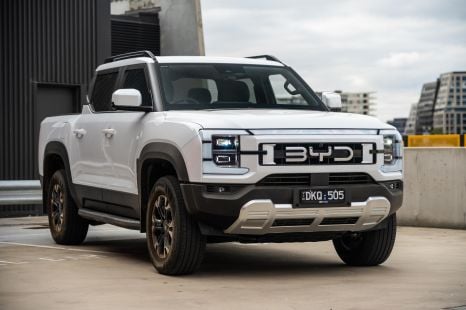

Max Davies
2025 BYD Shark 6 review
4 Days Ago
Jaguar is a brand favoured by British Royalty and Mi6 bosses, but not this one. It's far too boisterous, and a tad too quick for late night milk runs to the supermarket.
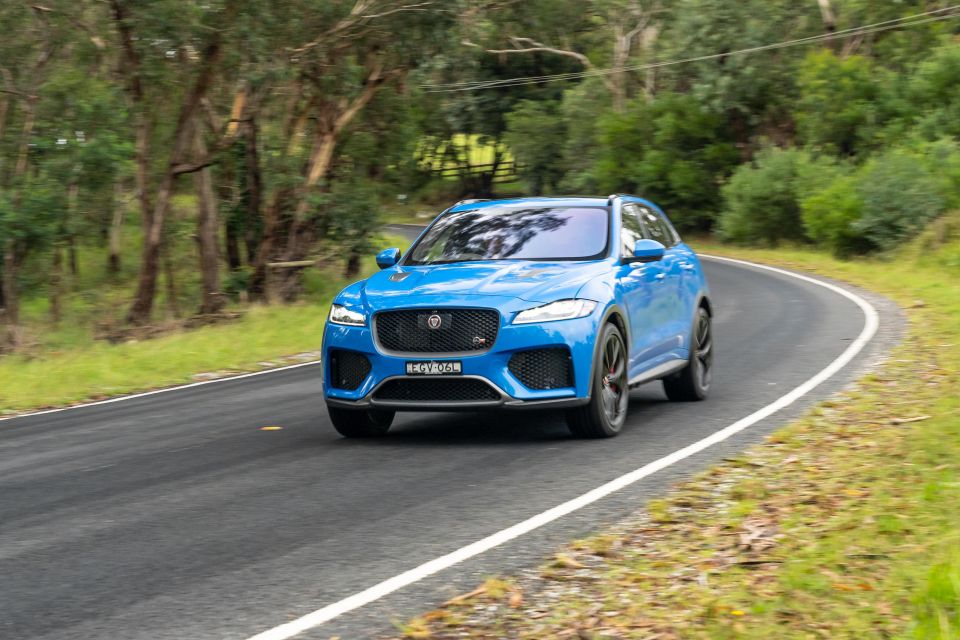
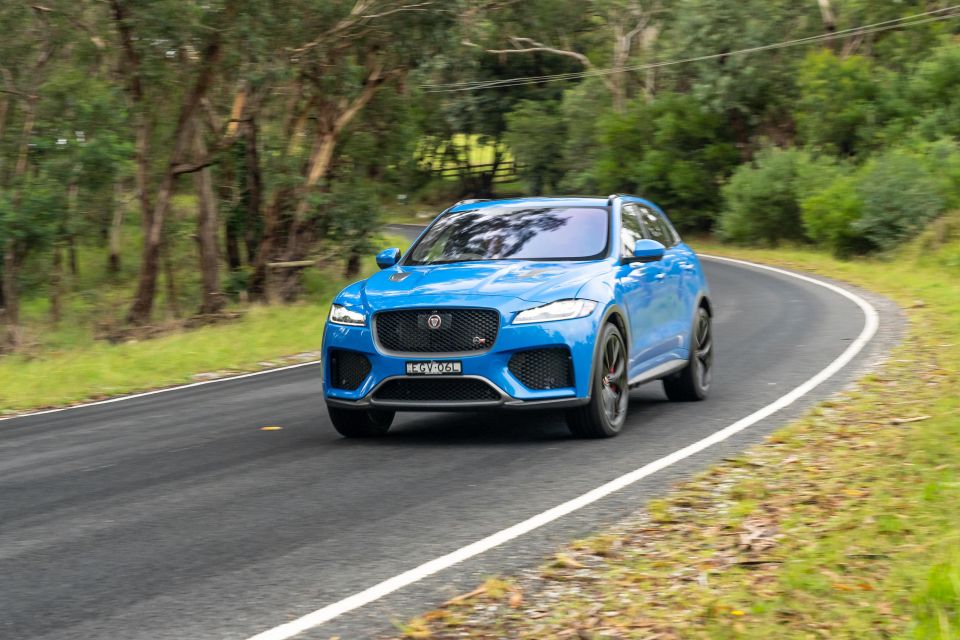

Senior Road Tester
New from
$76,952
excl. on-roads

Senior Road Tester
New from
$76,952
excl. on-roads


Senior Road Tester
New from
$76,952
excl. on-roads

Senior Road Tester
New from
$76,952
excl. on-roads
Quickly see how this car stacks up against its competition. Select any benchmark to see more details.
Where expert car reviews meet expert car buying – CarExpert gives you trusted advice, personalised service and real savings on your next new car.
Jaguar is an interesting brand. On one hand it embodies got the kind of grace and pace favoured by British royalty and MI6 bosses, and on the other there’s a hardcore racing pedigree dating back more than half a century.
Back in the early days of Jaguar, the notion of building a luxury high-rider wasn’t on founder Sir William Lyon’s radar. Land Rover would take care of that soon enough with the launch of the Range Rover, anyway.
In 2020, crossovers are a do-or-die necessity for more than 90 per cent of all carmakers – and the sole reason some of them are still in existence.
I don’t know when the tipping point came for SUVs in their quest for supremacy over wagons. I’m not sure why, either. But the phenomenon has gone well beyond the fad stage, given much of the world has been obsessed with driving SUVs for more than a decade now.
Luxury German carmakers Audi, BMW and Mercedes-Benz jumped on the bandwagon early and have profited hugely as a result, with their line-ups covering everything from city-sized crossovers to hulking full-sized SUVs with coupe styling.
Jaguar, on the other hand, was late to the party. If you exclude the pure-electric Jaguar I-Pace it only has two SUVs in its mainstream range: the compact E-Pace and mid-sized F-Pace. The latter has proven the bigger seller, and is arguably the more handsome of the two.

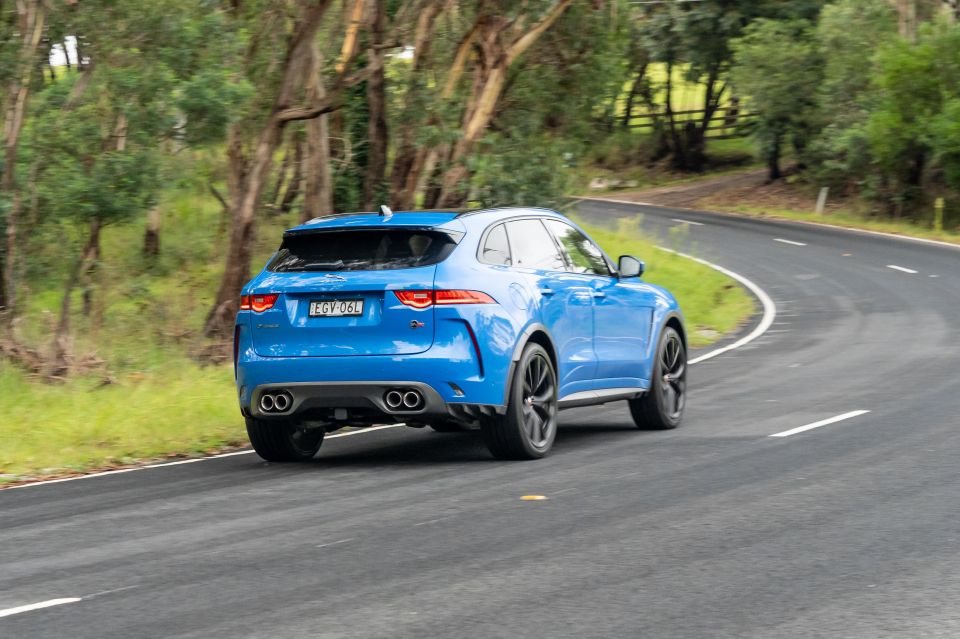
The Jaguar F-Pace SVR is the performance version, specially prepared by Jaguar’s Special Vehicle Operations arm.
Think of SVR as Jaguar Land Rover’s version of Audi RS, BMW M, or Mercedes-AMG. Despite the hard-hitting German onslaught, the F-Pace SVR is one of the most exciting SUVs less than $150,000 can buy.
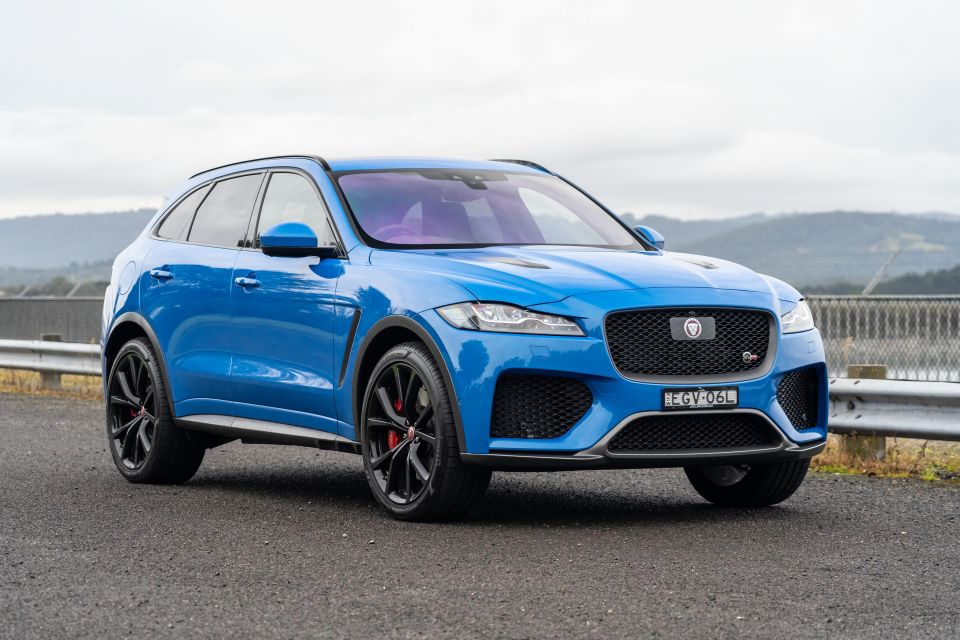
Here’s where it gets interesting. There are a couple of big-hitting bargains out there, and the Jaguar is among them.
Priced from $140,262 before on-road costs, the SVR is armed with significant firepower in the form of a supercharged 5.0-litre V8 pushing out 405kW of power and 680Nm of torque.
It’s not the most powerful, nor the cheapest luxury SUV on offer, but it isn’t far off. The biggest bang for your buck goes to the world’s fastest brick on wheels, the Jeep Grand Cherokee Trackhawk, armed with a huge 6.2-litre supercharged V8 dishing out a stupendous 522kW and 868Nm for $134,590 before on-roads.
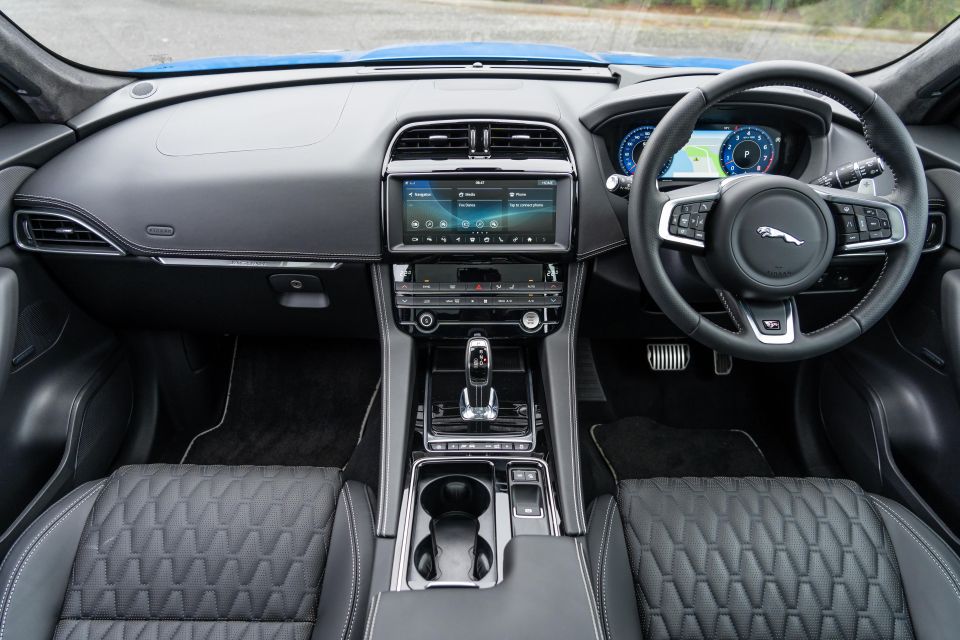
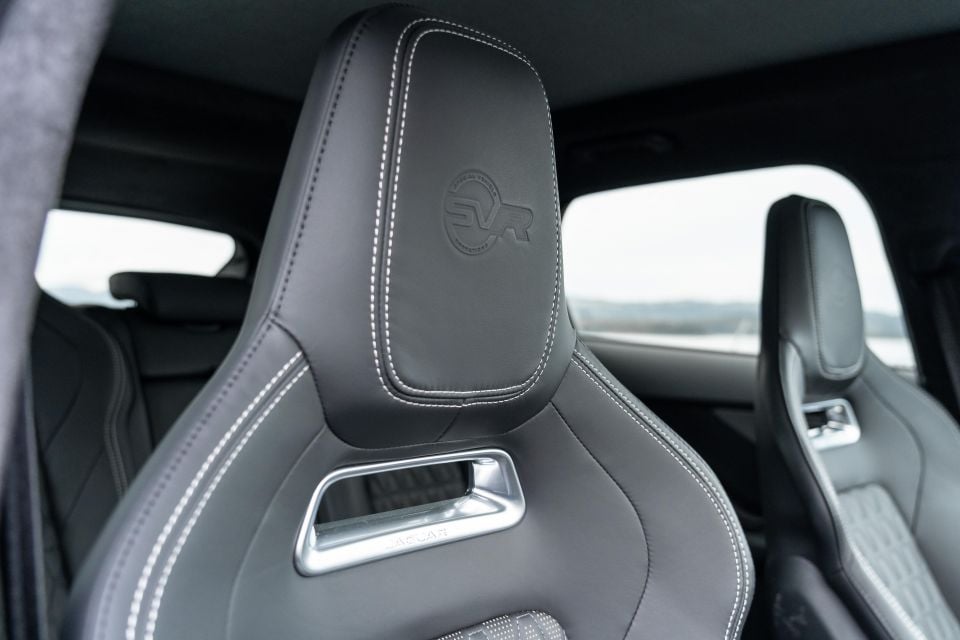
The usual German suspects pack a fait bit of heat under the bonnet, too. Interestingly, Audi doesn’t really have much of a play here with its SQ5 TFSI. It’s well priced at $99,900 before on-roads, but its 3.0-litre turbo-six only makes 260kW and 500Nm.
BMW has the X3 M Competition that uses 3.0-litre inline twin-turbo six with 375kW and 600Nm, with a price tag of $157,900 before on-roads, while Mercedes-Benz steps into the ring with its GLC 63 AMG with the same 375kW but a handier 700Nm of torque.
It’s priced from $164,600 before on-road costs, more than $24,000 atop the Jaguar’s asking price.
Closer to the mark is the $142,000 Porsche Macan Turbo with a 2.9-litre twin-turbo V6 making 324kW and 550N, good for the same zero-100km/h performance as the SVR, but its a lot smaller inside.
You get a very different Big Cat from the rest of the F-Pace stable, and arguably one of the nicest looking SUVs on the market – one that oozes class as well as serious intent.
That intent is written all over the SVR, not just to enhance its looks but to aid in either cooling or aerodynamics. Take the black bonnet vents. They extract heat from the engine bay, but also look the part.
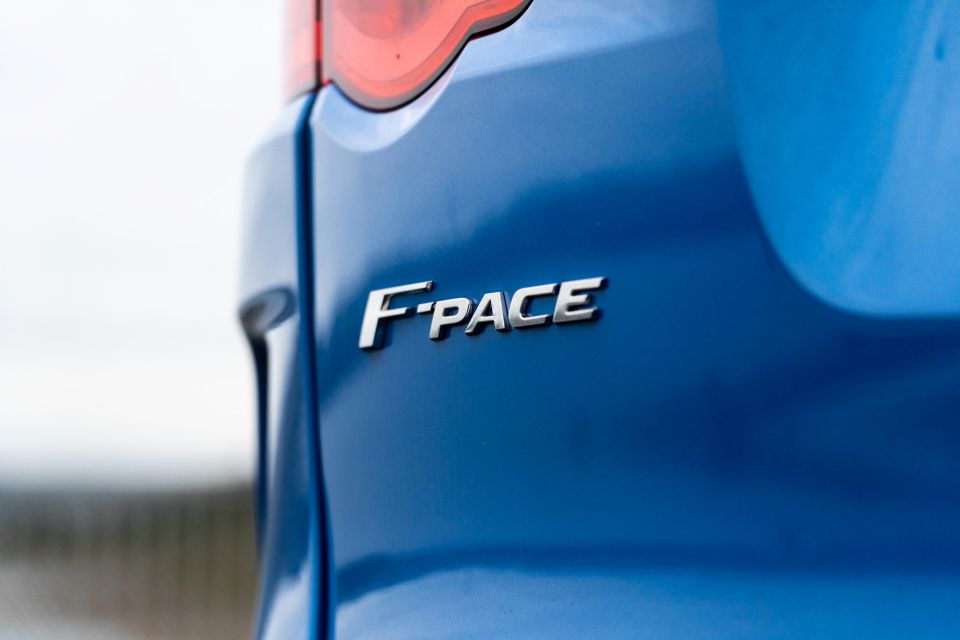
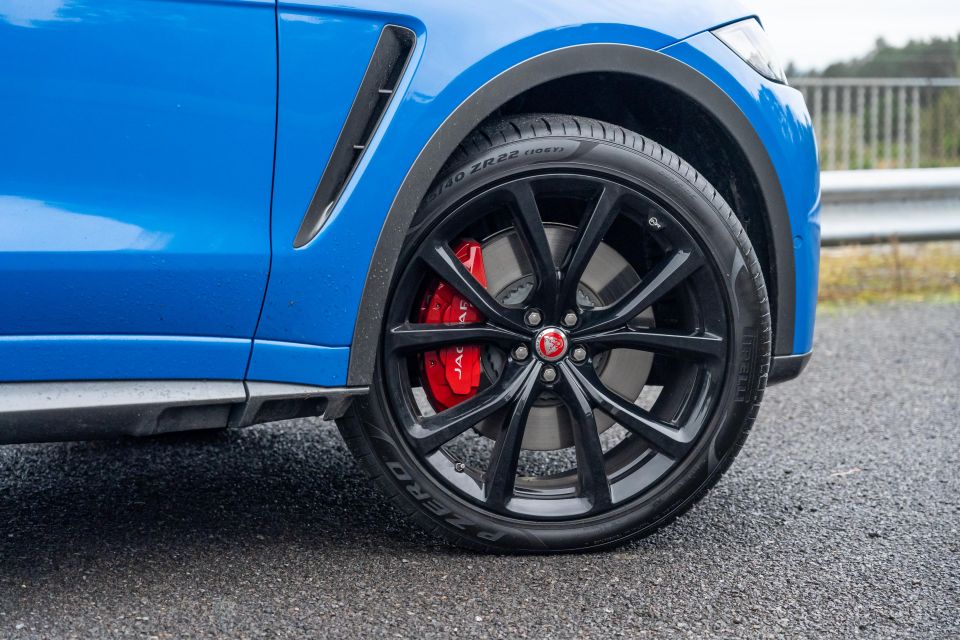
Same goes for the massive air intakes incorporated into the front bumper and side strakes that do several things: reduce pressure in the wheel arches, reduce lift, and help with cooling. The overall effect is to provide better high-speed stability for the SVR.
The rear view is just as good with a unique diffuser housing larger 95mm quad pipes as part of the SVR’s active exhaust system. It bellows like no other when given a bit of curry. There are side/rear intakes back there to smooth out airflow away from the vehicle.
Apart from the head-turning Ultra Blue metallic paint job and massive 22-inch optional wheels in gloss-black, you won’t miss the monstrous 395mm brake rotors on all four wheels with Jaguar-branded red calipers.
Those 22s are forged units that save 2.4kg up front and 1.7kg on the rear, and provide better airflow to the brakes.
If the Blue is a bit too much for you, there are 24 other colours to choose from including favourites such as Santorini Black, Firenze Red, and Indus Silver. There isn’t a colour that’s not worth considering here.
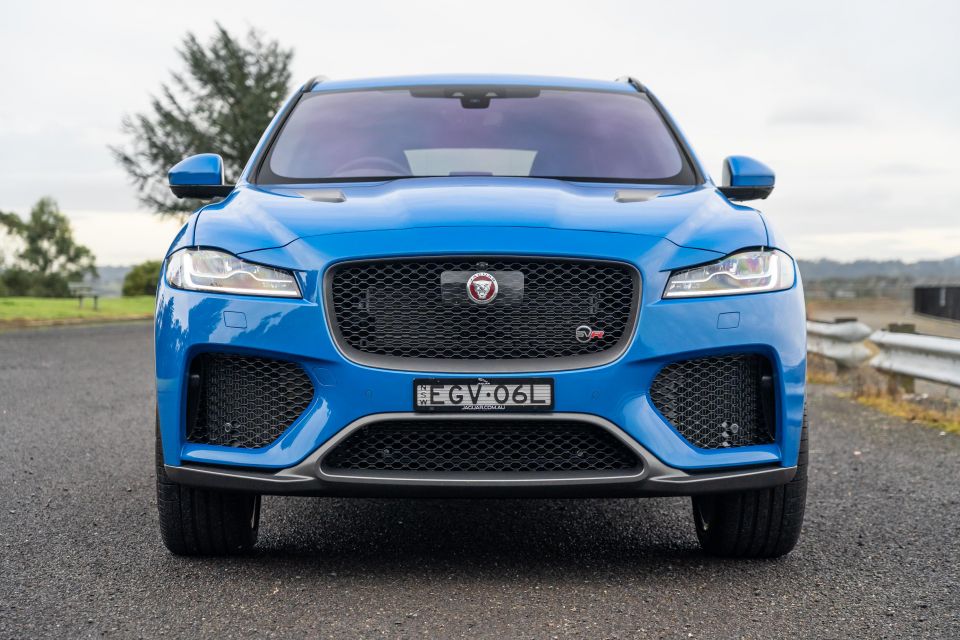
Climb aboard the Jaguar F-Pace SVR and it’s just as special as the outside. Up front, the slimline performance seats attract immediate attention. They’re beautifully sculptured, and heavily bolstered all the way up to your shoulders for complete lockdown in tight bends.
The rear seats are just as exquisite, with a similar shape and the same upholstery, along with a 40/20/40 split-fold set up.
Unlike all other F-Pace variants you won’t find Jaguar’s trademark rotary shifter in the SVR, rather there’s a proper old-school gear shifter.
Up front, you’ll find Jaguar’s 10-inch Touch Pro infotainment system and a huge digital instrument display, similar to what you’d find in a Range Rover. The infotainment system feels a generation behind that of Jaguar Land Rover’s latest systems, despite being functional and up to the task.
Standard inventory is generous, as you might imagine for your $140,000 before on-roads. Adaptive LED headlamps with power washing, and auto-dimming power-fold heated door mirrors are both standard, and both handy.
Naturally there’s also a powered tailgate, heated steering wheel, heated and cooled front seats which are 14-way adjustable with memory, as well as heated rear seats.
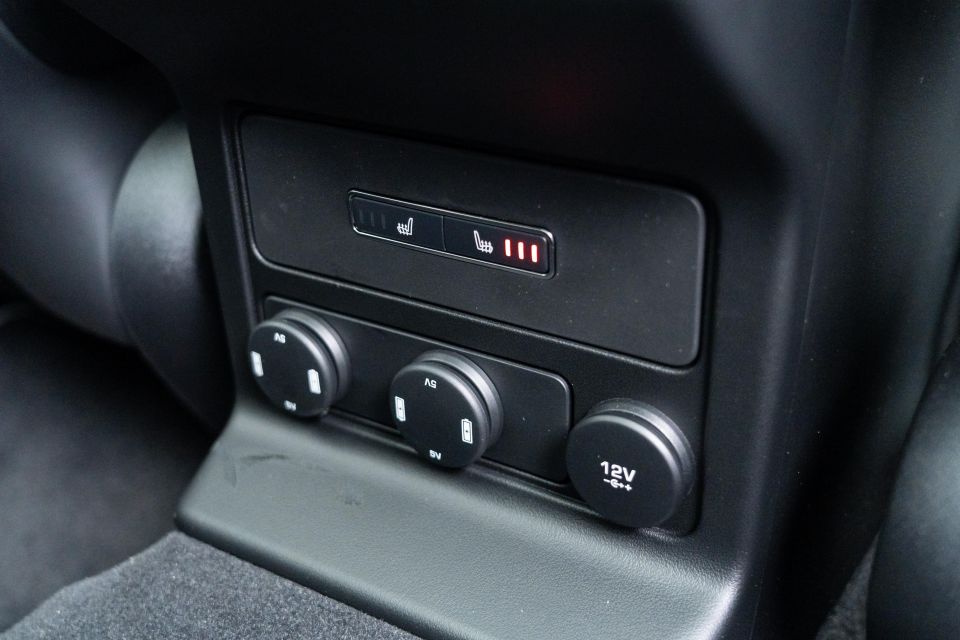
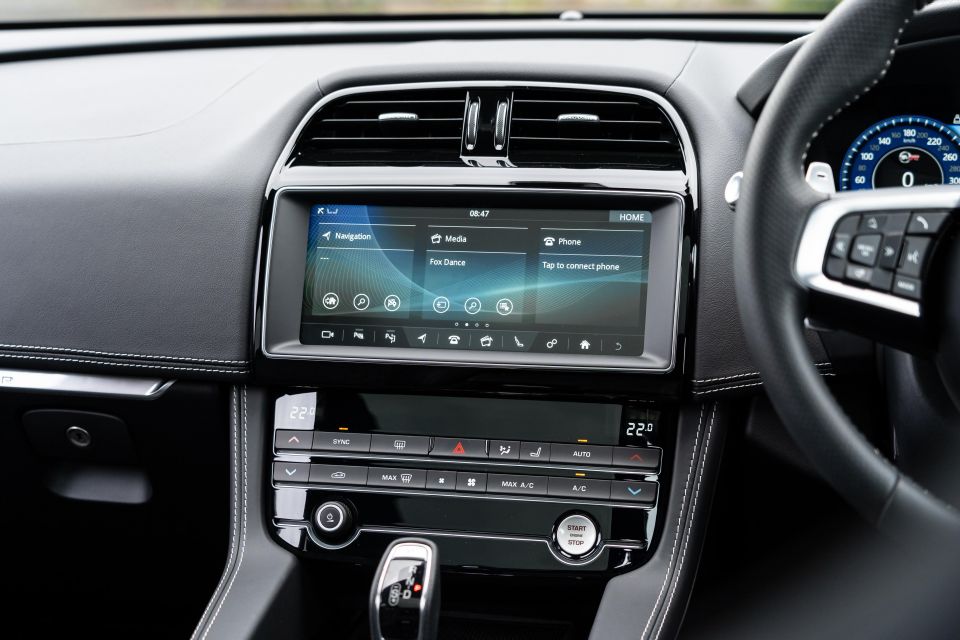
The standard kit list also include an electrically-operated steering column, ambient lighting, suede headlining, and two-zone climate control. Suffice to say the F-Pace SVR isn’t short on features.
But that doesn’t mean it’s a case of what you see is what you get. Our tester was fitted with nearly $20,000 worth of goodies, like a fixed panoramic roof ($3570), head-up display (which also adds a solar attenuating windscreen, $2650), optional 22-inch wheels ($2210), and a Meridian audio system with 825W and 17 speakers ($1040).
There’s a few we thought would be standard on the SVR, such as privacy glass ($950), configurable ambient lighting ($780), gloss black roof rails ($640), and DAB radio ($950). Come on guys, a rear seat remote release for $120? Really?
The F-Pace was last tested in 2017 by Euro NCAP and was awarded the maximum five-star safety rating.
For adult occupant protection F-Pace scored 35.5 from a possible 38 points, while child occupant protection saw it score 42 from a maximum 49. In the pedestrian protection test it managed 33.9 from a possible 42, and for safety assist systems is got 8.8 from 12.
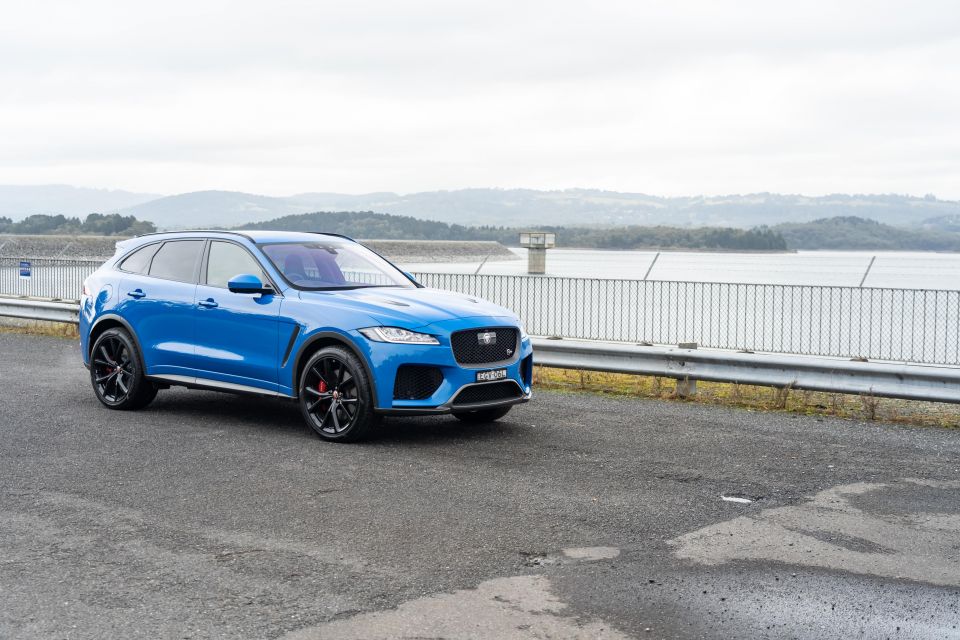
Overall, it’s a good result with key features such as six airbags, autonomous emergency braking – three stages excluding high-speed emergency braking – lane-departure warning, forward collision warning, and rear cross-traffic alert.
Unfortunately, if you want high-speed AEB, blind-spot monitoring, adaptive cruise with steering assist, and a 360-degree surround camera you’ll need to stump up another $4589 for the Driver Assist Pack.
No question as to the premium look and feel of the SVR cabin, with superb quality leather upholstery, and lashings of piano black and polished metal accents to make the place feel special – and visually stunning.
But to be honest, you expect more from a range-topping Jaguar SUV. It comes down to the fact Range Rovers get the latest Touch Pro Duo infotainment system boasting three high-definition screens (plus the super-size digital instrument display) which is so visually sharp to render anything less a bit disappointing. It’s not a deal breaker, but it’s something worth considering.
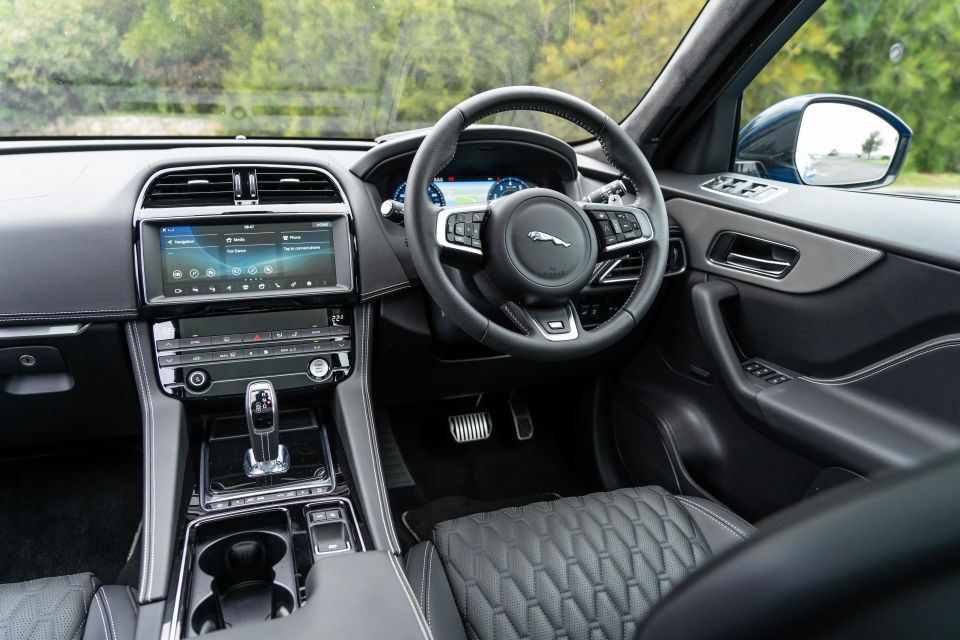
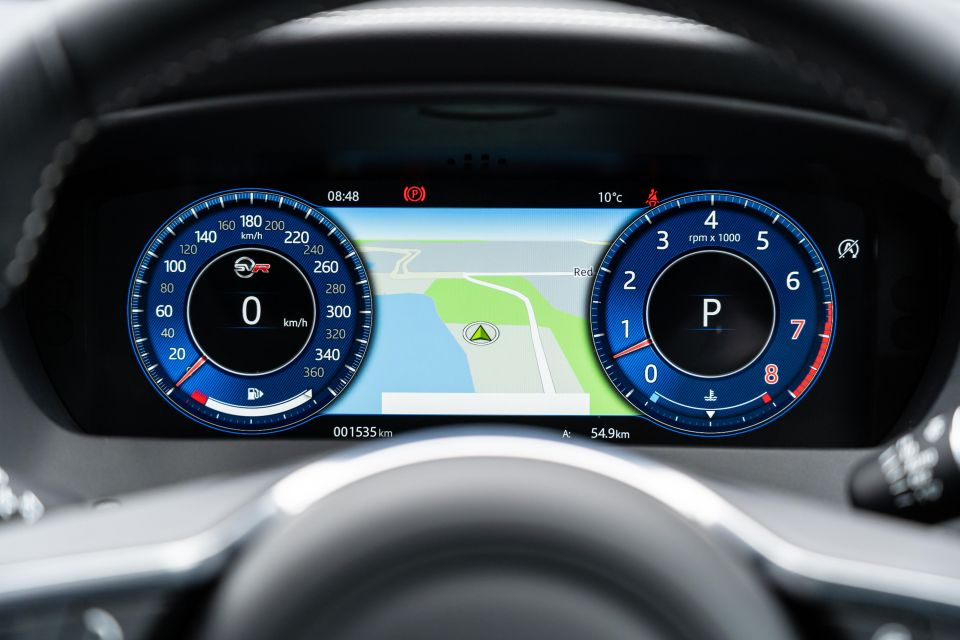
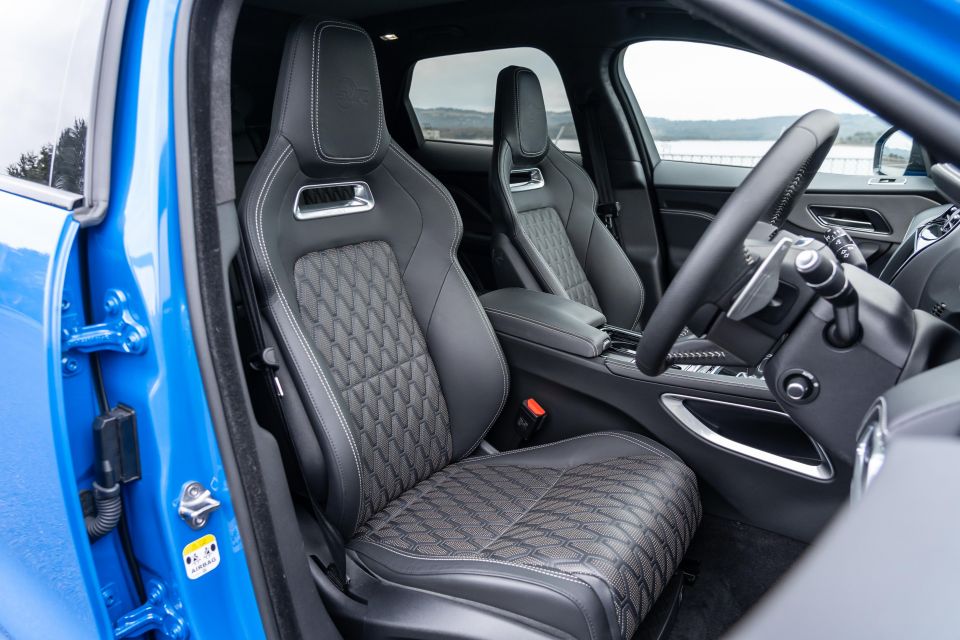
There are a few cheap plastics confined to the rear-seat vent housing but even so, it tends to detract from the superb fit-out up front. It’s worth reminding yourself the F-Pace SVR is still a veritable bargain against most of its competition, regardless of these shortfalls.
There’s plenty of cabin space though, with both front and rear passengers able to access substantial leg and headroom. With that said, the high belt line means it can feel a little cramped in the second row if you have a shorter frame.
Boot space is generous, with 650 litres behind the second row – identical to the bigger BMW X5 – expanding to 1740 litres with the seats folded (not flat in the Jaguar’s case). It’s a good size aperture and the area is carpet-lined.
It’s more or less the same 5.0-litre supercharged V8 you’ll find in the Jaguar F-Type SVR, where it’s tuned to smash out 423kW of power and 700Nm of torque.
The F-Pace equivalent makes 404kW at 6500rpm and 680Nm from 2500-5500rpm, put the road through the same eight-speed automatic.
Jaguar’s official claim for the benchmark 0-100km/h sprint is 4.37 seconds and top speed is 283km/h. It’s not the fastest by any measure, but it certainly feels ferociously quick from behind the wheel.
There are plenty of competitors that are up to the sprint challenge at least, some of which we mentioned earlier in the article. They say nothing beats cubic inches, and in the Jeep Grand Cherokee Trackhawk’s case it rings true. It’ll hit 100km/h in just 3.7 seconds.
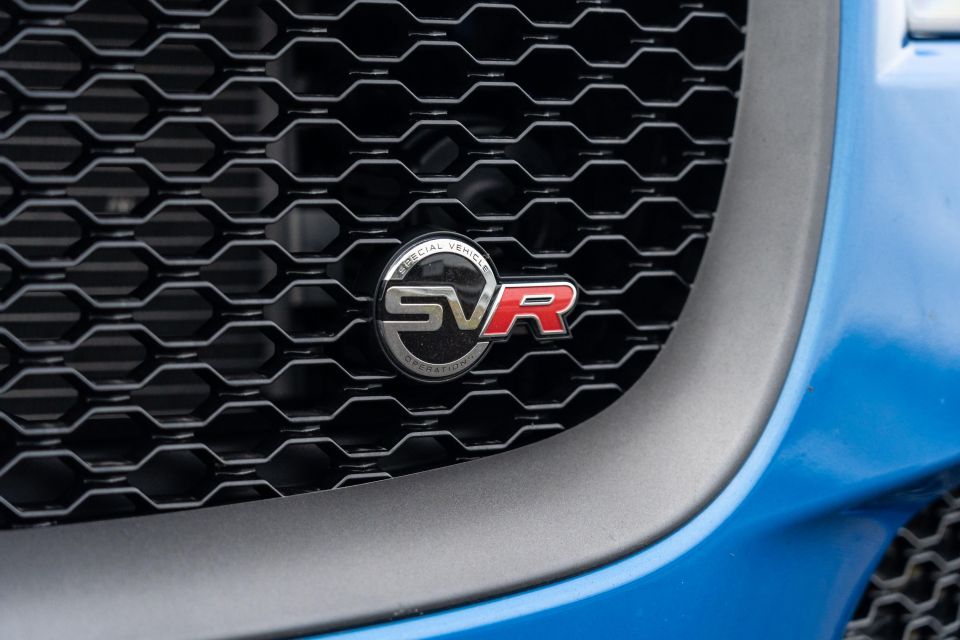
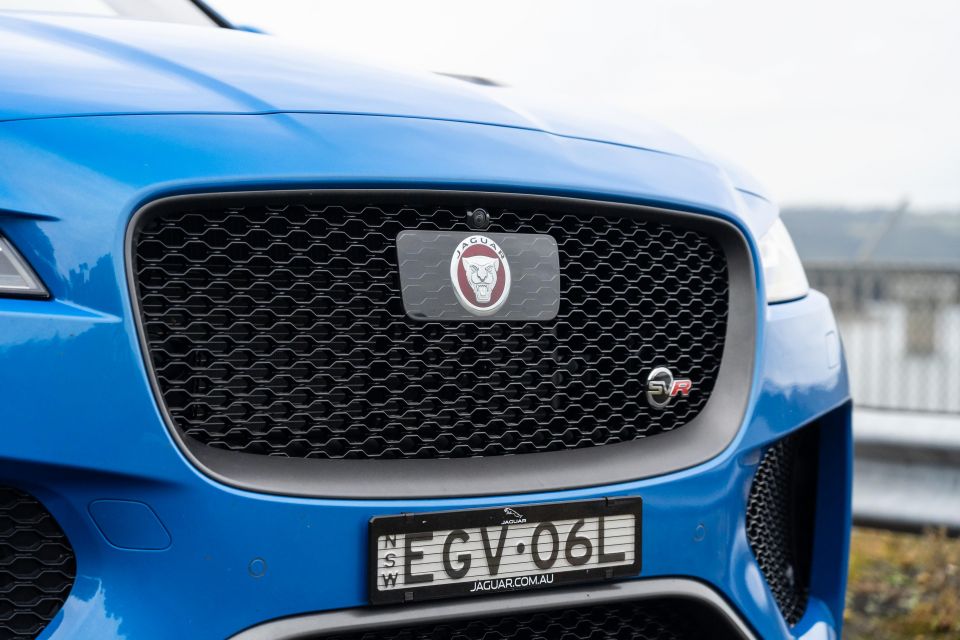
Next quickest in the segment is a dead-heat if you believe the factory claims with both the Alfa Romeo Stelvio Q and Mercedes-Benz GLC63 S AMG requiring 3.8 seconds to get the job done.
The BMW X3 M Competition is quick at 4.1 seconds, while the Jaguar and Porsche Macan Turbo are tied at 4.3 seconds for the run.
First off, you’re going to love the slimline performance buckets and the low-set driving position. It means you’re sitting in the car rather than perched on top.
Mind, the SVR is still eminently comfortable. At the same time your torso is locked in place to handle to handle the g-forces. Don’t laugh, you can push the SVR mighty hard and you’ll appreciate these pews more than you know.
Interestingly, I was looking for a bright-red start button on the console of the SVR, but it just has the standard metal-look version used throughout the Jaguar range. At least the script lights up red.
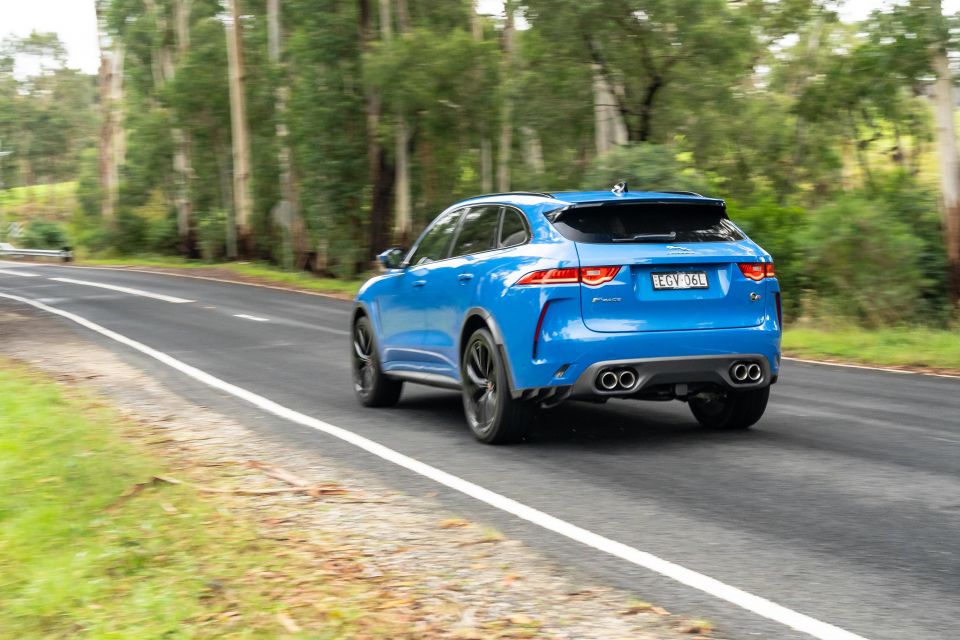
All is forgotten once that supercharged V8 barks to life and gives you a taste of the thunder and lightning to come once you get into it.
The press kit describes Jaguar’s variable valve active exhaust system as providing a “charismatic soundtrack”. Forget about that overly humble talk entirely, this thing is going to wake your entire street – in a good way, let me say.
All this ruckus occurs even if you give the metal-capped accelerator pedal a prod in the default Comfort drive mode. Switching over to S-Dynamic is where the F-Pace SVR properly comes alive though, with enough noise to overshadow many of the world’s best-sounding sports cars.
This is also where you’ll learn to love its twin-vortex supercharger over any number of turbos that competitors might employ. Throttle response is satisfyingly urgent and its simply doesn’t let up, with enough mid-range pull to embarrass the current crop of American muscle cars.
Never mind the eight-speed auto, either, just in case you’re thinking about the lack of a dual-clutch transmission. Trust me, this auto is plenty quick – quick enough for me to think it was a double-clutch gearbox.
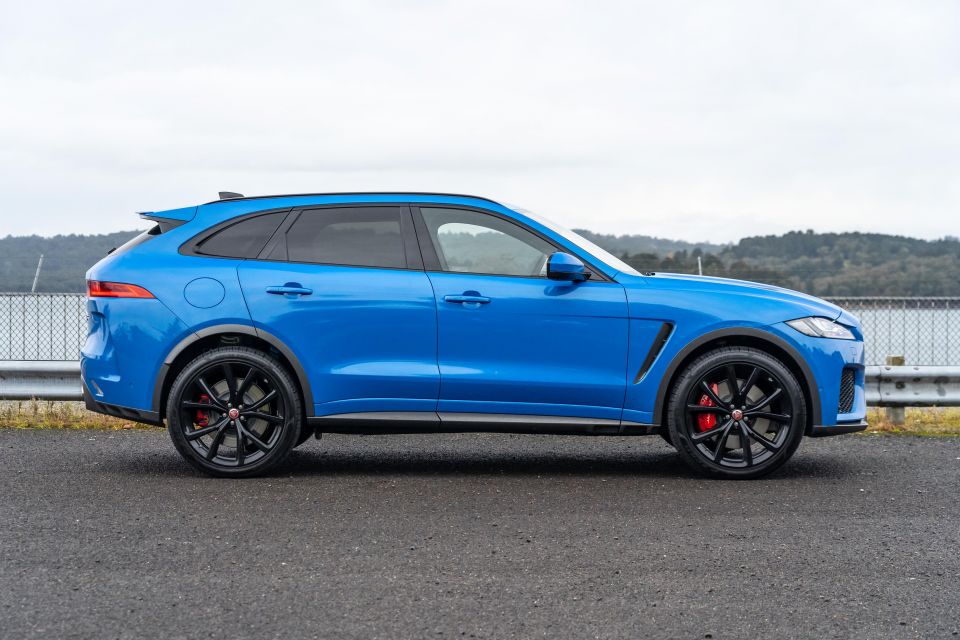
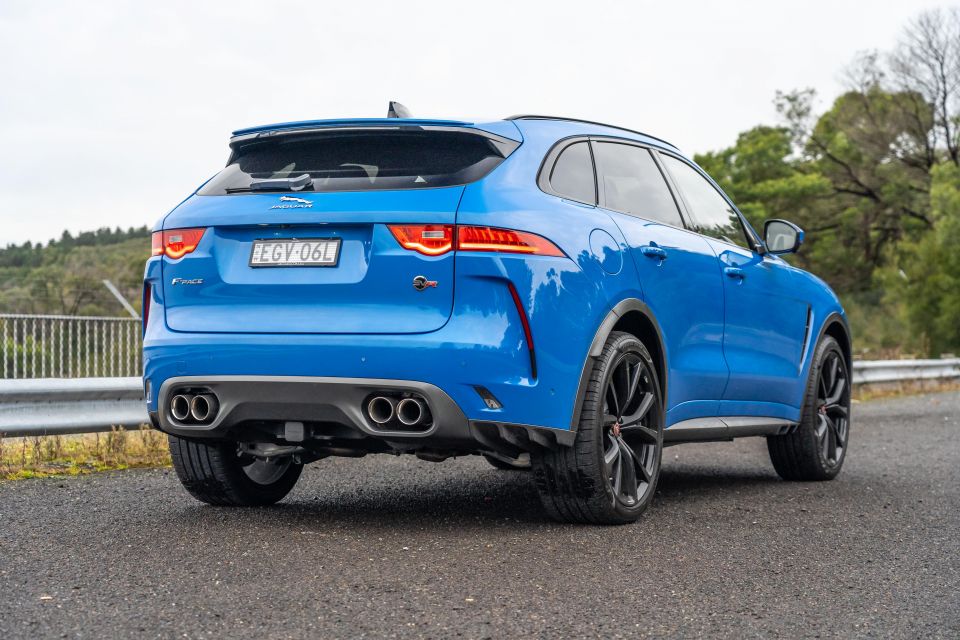
In traffic and in Comfort, it’s a more relaxed and gentle beast allowing you to dial up the volume and enjoy the clarity of your 17-speaker Meridian sound system. Truth be told, I found myself hitting that little chequered flag button far too often to evaluate the surround-sound audio, good as it might be.
Just because the Jaguar F-Pace SVR comes with one of the last great-sounding engines (with those ever-tightening noise and emissions restrictions) doesn’t mean the handling hasn’t been addressed.
There’s a raft of limpet-like measures the SVR can lean on such as its all-wheel drive architecture, sports-tuned active electronic differential, adaptive dampers, as well as torque vectoring by braking, but I’d argue it still feels nicely balanced when you’re pushing in the bends and rock solid at pace.
The big 295/35 Pirellis down back (remember they’re 22-inch wheels) and 265/40s up front provide a decent size footprint, so there’s no issue with grip – even in the torrential rain we were caught in during our test.
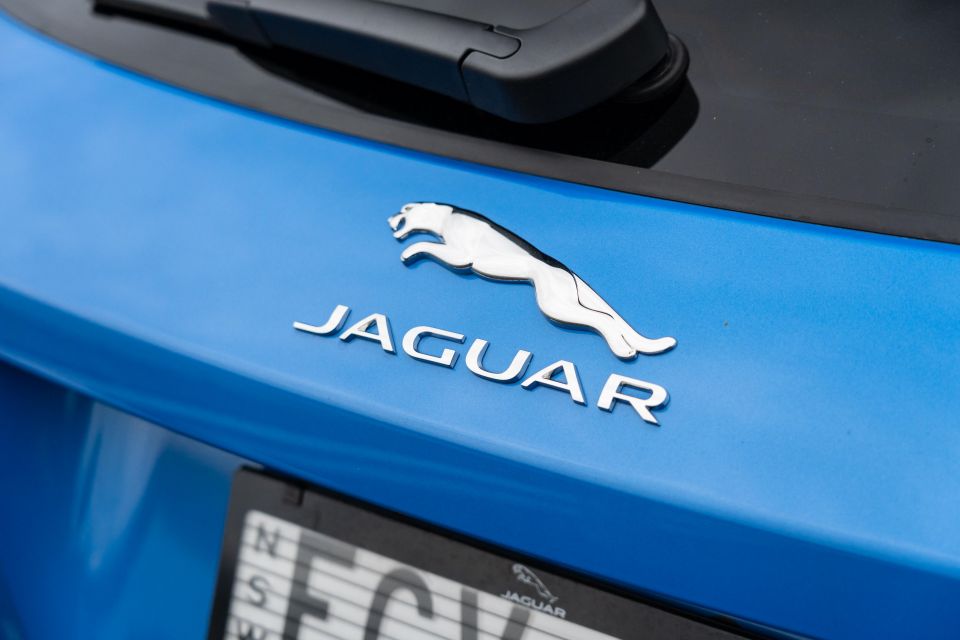
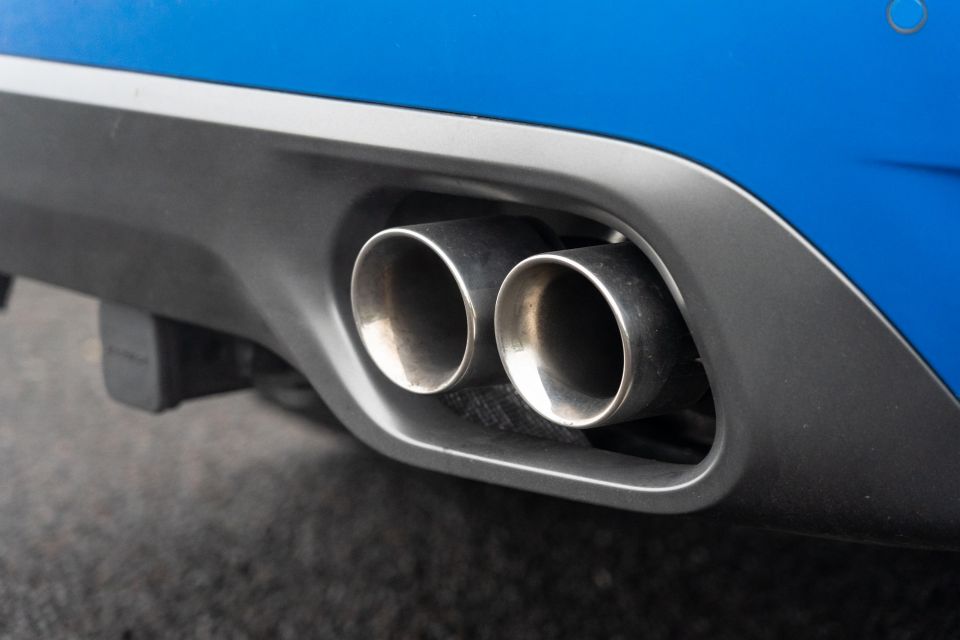
For those those keen to fully exploit the performance of the SVR, there’s also good news with regards to ride comfort, despite the absence of air suspension. I’d almost go so far as to say it’s not missed here at all.
There’s sufficient compliance built into the Jag for it to absorb most bumps (even the bigger broken surfaces) and provide sufficient passenger comfort for any length journey.
Supercharged V8s of this calibre can be dreadfully thirsty at the best of times, only made worse by the fact they sound best with a heavy right foot.
Interestingly, after a week or more behind the wheel, more often than not enjoying the its heavy-metal tune, I was still averaging between 16-18L/100km, which is a lot less than expected. It’s plenty more than the combined claim of 11.7L/100km.
Officially, Jaguar Land Rover offer a three-year factory warranty across its entire range, but up to 30 June it’s providing a five-year, unlimited-kilometre warranty for new and dealer demonstrator vehicles.
There’s also a service plan for $3750 for five years or 130,000km and three years of complimentary roadside assist.
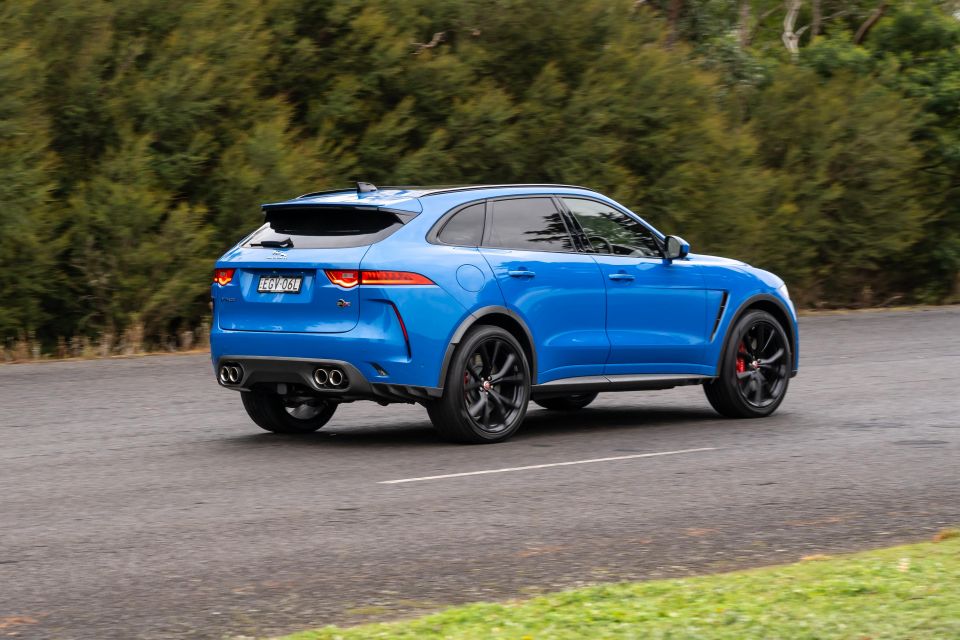
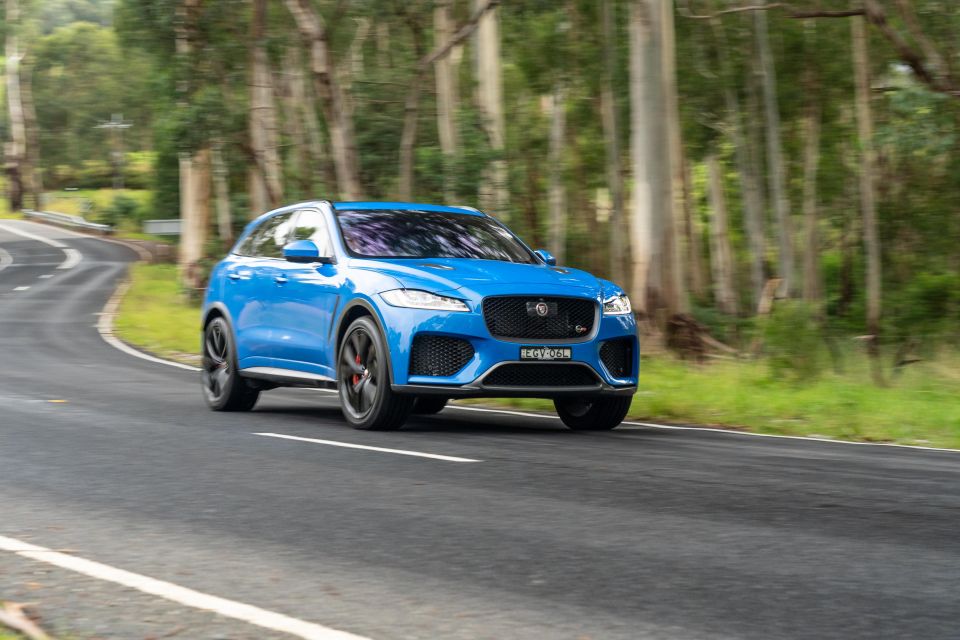
Where expert car reviews meet expert car buying – CarExpert gives you trusted advice, personalised service and real savings on your next new car.
Let’s leave pricing out of it for the moment. Even if it was $20,000 more, the Jaguar F-Pace SVR would make the short list of anyone looking a mid-sized performance SUV with a luxury badge.
Then there’s the noise. The Jaguar F-Pace SVR has one of the best performance car exhaust notes on the planet thanks to its relatively unrestricted fire-breathing V8. It also has excellent handling and ride, and a luxurious interior fit out.
It’s not perfect, but the gripes are minor in the scheme of things because the F-Pace SVR seems like a veritable bargain against most of its rivals. It rewards on most fronts.
Where expert car reviews meet expert car buying – CarExpert gives you trusted advice, personalised service and real savings on your next new car.


Max Davies
4 Days Ago
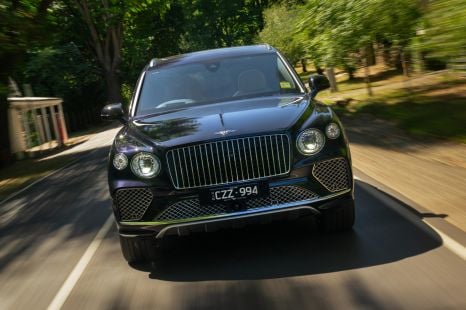

Josh Nevett
3 Days Ago
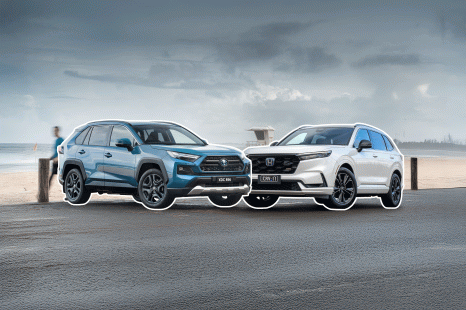

Andrew Maclean
3 Days Ago
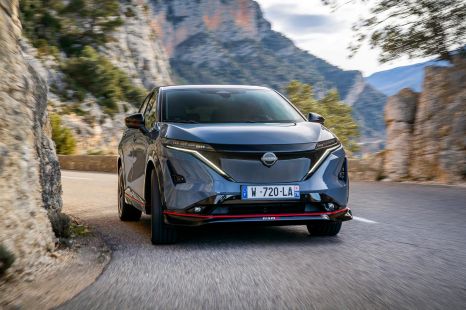

Shane O'Donoghue
2 Days Ago
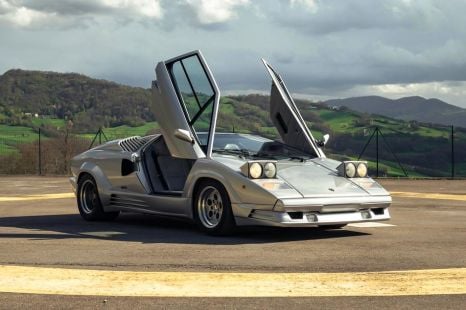

Anthony Crawford
1 Day Ago
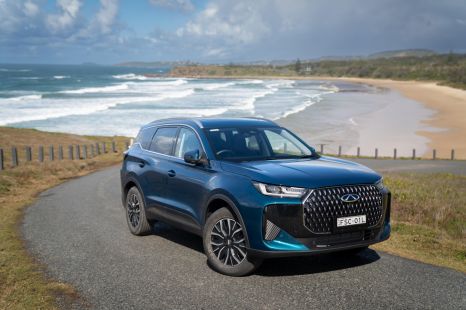

Andrew Maclean
1 Day Ago